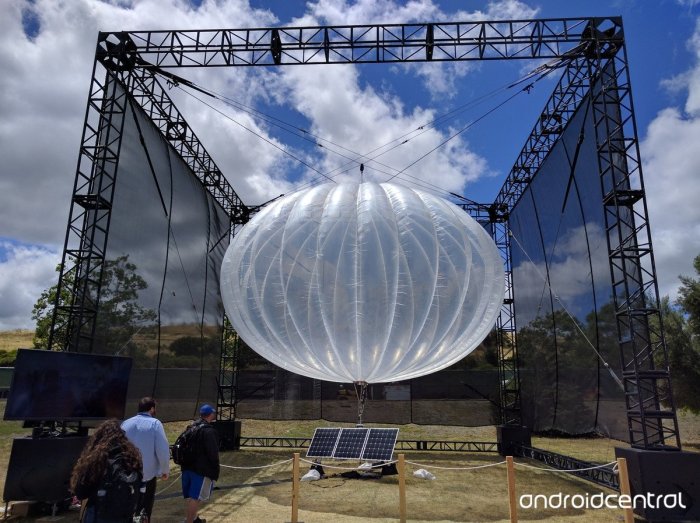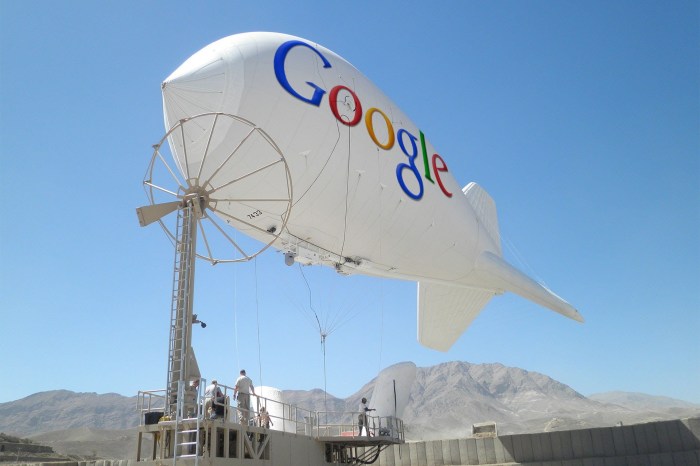Project Loon in Puerto Rico
Project Loon, Google’s ambitious endeavor to provide internet access to remote and underserved areas using high-altitude balloons, found a critical mission in Puerto Rico. The island, known for its natural beauty and rich culture, faced a significant challenge in the realm of internet connectivity. The aftermath of Hurricane Maria in 2017 highlighted the fragility of Puerto Rico’s infrastructure and the urgent need for reliable communication solutions.
The Pre-Loon Connectivity Landscape
Before the arrival of Project Loon, internet access in Puerto Rico was plagued by several challenges. The island’s mountainous terrain and dispersed population made it difficult and expensive to establish traditional fiber optic networks. Moreover, the island’s infrastructure was often susceptible to damage from natural disasters, leading to prolonged outages and hindering communication.
The Impact of Hurricane Maria
Hurricane Maria, a devastating Category 4 hurricane that struck Puerto Rico in 2017, brought the island’s communication vulnerabilities to the forefront. The storm caused widespread damage to the island’s infrastructure, including power grids and telecommunications networks. This left millions of Puerto Ricans without access to essential communication services, further exacerbating the already challenging situation.
Project Loon’s Deployment in Puerto Rico
Project Loon’s deployment in Puerto Rico marked a significant step towards restoring connectivity and providing essential communication services in the aftermath of Hurricane Maria. Google launched a fleet of balloons equipped with communication technology, providing internet access to the island’s residents. The deployment of Project Loon in Puerto Rico was a testament to the technology’s potential to provide vital communication services in times of crisis.
Key Features of Project Loon in Puerto Rico
- Timeline: Project Loon was deployed in Puerto Rico shortly after Hurricane Maria struck the island in 2017. The balloons were launched from a base in the United States and flew over the island, providing internet access to residents.
- Number of Balloons: Google launched a significant number of balloons to cover the island’s airspace, ensuring widespread internet access. The exact number of balloons deployed has not been publicly disclosed, but reports indicate that hundreds of balloons were used.
- Coverage Area: Project Loon’s balloons provided internet access to a large portion of Puerto Rico, including areas that were inaccessible to traditional networks. The balloons were able to reach remote and mountainous regions, expanding the reach of internet connectivity.
Impact of Project Loon
Project Loon’s deployment in Puerto Rico had a significant impact on the island’s recovery efforts. The balloons provided a lifeline for communication, allowing residents to connect with loved ones, access essential information, and coordinate relief efforts. The technology’s ability to provide internet access in the face of widespread infrastructure damage demonstrated its potential to bridge the digital divide and ensure communication during emergencies.
Technology and Innovation
Project Loon, Google’s ambitious initiative to provide internet connectivity to remote and underserved areas, relies on a sophisticated network of high-altitude balloons. These balloons, equipped with cutting-edge technology, act as aerial base stations, transmitting internet signals across vast distances.
Design and Communication Methods
The balloons used in Project Loon are designed to be lightweight and durable, capable of withstanding harsh weather conditions and staying aloft for extended periods. Each balloon is filled with helium and equipped with a solar-powered communication system.
- Balloon Design: The balloons are made of polyethylene, a material known for its strength and flexibility. They are designed to be highly buoyant, allowing them to rise to altitudes of 20 kilometers (12 miles) above the Earth’s surface. The balloons are equipped with a gondola, which houses the communication equipment, sensors, and other essential components.
- Communication Methods: Project Loon uses a combination of radio frequency (RF) and laser communication technologies to transmit internet signals. The balloons communicate with each other using laser beams, creating a mesh network that allows data to be relayed across long distances. The balloons also use RF signals to connect to ground stations, which provide the link to the internet backbone.
- Ground Stations: Ground stations are strategically located on the ground to act as gateways between the balloons and the internet. These stations receive signals from the balloons and relay them to the internet backbone, and vice versa.
Deployment and Management
Deploying and managing a network of high-altitude balloons presents unique challenges. Google has developed a sophisticated system to track, control, and manage the balloons in real time.
- Deployment: Balloons are launched from various locations around the world, depending on the target area. The balloons are carefully tracked and monitored as they ascend to their operational altitude.
- Management: The balloons are controlled using a combination of software algorithms and ground-based personnel. The software algorithms help to maintain the balloons’ altitude, adjust their position, and optimize network performance. Ground-based personnel monitor the balloons and provide support as needed.
- Network Optimization: The balloons are constantly moving, and the network is dynamically adjusted to ensure optimal coverage and connectivity. The software algorithms use data from the balloons and ground stations to determine the best positions for the balloons and to manage traffic flow.
Advantages and Limitations
Using high-altitude balloons for internet connectivity offers several advantages over traditional methods like fiber optic cables, but it also comes with certain limitations.
- Advantages:
- Rapid Deployment: Balloons can be deployed quickly and easily, making them ideal for providing internet access to disaster-stricken areas or remote locations.
- Wide Coverage: Balloons can provide internet access to a large geographic area, including areas that are difficult or expensive to reach with traditional infrastructure.
- Cost-Effective: Using balloons can be more cost-effective than laying down fiber optic cables, especially in remote or challenging terrain.
- Limitations:
- Weather Dependence: The performance of balloons can be affected by weather conditions, such as strong winds or heavy rain.
- Limited Bandwidth: The bandwidth available through balloons is currently limited compared to fiber optic cables.
- Latency: The latency (delay) experienced when using balloon-based internet can be higher than with fiber optic cables.
Impact and Benefits
Project Loon’s impact on Puerto Rico extended beyond simply providing internet access. It brought about a significant transformation in the island’s digital landscape, influencing various aspects of life, from education to healthcare and economic development.
Connectivity Rates and Online Service Accessibility, T mobile connectivity in puerto rico project loon
The deployment of Project Loon significantly boosted internet connectivity rates in Puerto Rico. Before the project, internet access was limited, particularly in rural areas, and many residents lacked reliable internet connections. Project Loon’s high-altitude balloons provided internet coverage to previously unconnected areas, bringing about a dramatic increase in internet access across the island. This expanded connectivity enabled residents to access online services and resources previously unavailable to them, bridging the digital divide and fostering inclusivity.
Social Benefits
The improved connectivity facilitated by Project Loon had a profound impact on various aspects of social life in Puerto Rico.
- Education: Students in rural areas gained access to online learning resources, educational platforms, and virtual classrooms. This enabled them to participate in online courses, access educational materials, and receive remote tutoring, enhancing their learning opportunities and improving their academic performance.
- Healthcare: Project Loon’s connectivity enabled telemedicine services, allowing patients in remote areas to consult with doctors remotely via video calls. This improved access to healthcare, especially for those living in underserved areas, and facilitated timely medical consultations, diagnosis, and treatment.
- Communication: The increased connectivity facilitated communication between families and friends, both within and outside Puerto Rico. This strengthened social bonds and improved communication channels, especially during emergencies and natural disasters.
Economic Benefits
Project Loon’s impact on the economy of Puerto Rico was multifaceted, creating opportunities for growth and development.
- Business Development: The improved connectivity fostered the growth of online businesses and e-commerce platforms in Puerto Rico. Businesses gained access to a wider market, enabling them to reach customers globally and expand their operations. This also led to the creation of new jobs in the technology sector, boosting the local economy.
- Tourism: The increased connectivity made it easier for tourists to access information about Puerto Rico, book accommodations, and navigate the island. This attracted more tourists, boosting the tourism industry and contributing to economic growth.
- Innovation: The introduction of Project Loon fostered a culture of innovation and technology adoption in Puerto Rico. It inspired local entrepreneurs and developers to explore new ideas and develop innovative solutions using technology. This created a more dynamic and entrepreneurial environment, driving economic growth and diversification.
Challenges and Limitations
While Project Loon brought about significant benefits, it also presented challenges and limitations as a temporary solution for long-term internet access.
- Sustainability: Project Loon was a temporary solution, and its long-term sustainability was questionable. The reliance on balloons for internet access presented challenges related to weather conditions, maintenance, and cost.
- Infrastructure Development: While Project Loon provided a quick fix for internet access, it did not address the need for long-term infrastructure development. The lack of permanent internet infrastructure limited the potential for sustainable economic growth and development.
- Digital Literacy: The increased connectivity highlighted the need for digital literacy programs to equip residents with the skills necessary to effectively utilize internet access.
Future of Connectivity in Puerto Rico: T Mobile Connectivity In Puerto Rico Project Loon
Project Loon was a remarkable demonstration of the potential for innovative technologies to bridge the digital divide. While it’s no longer active, the lessons learned and the progress made in Puerto Rico have paved the way for a more connected future. The island is now embracing a multi-pronged approach to ensuring reliable and equitable internet access for all.
Investing in Infrastructure
Investing in robust and resilient infrastructure is crucial for achieving sustainable connectivity. Puerto Rico is actively working on expanding its fiber optic network, which offers significantly faster and more reliable internet speeds compared to traditional copper cables. The government, in collaboration with private companies, is investing heavily in laying down new fiber optic lines, extending coverage to underserved areas and bolstering existing infrastructure. This is not just about providing faster internet; it’s about creating a foundation for economic growth, innovation, and educational opportunities.
T mobile connectivity in puerto rico project loon – Project Loon’s journey in Puerto Rico serves as a powerful reminder of the transformative potential of technology. It demonstrated that even in the face of unimaginable adversity, human ingenuity can find a way to connect people and communities. While Project Loon’s mission in Puerto Rico has concluded, its legacy lives on, inspiring continued efforts to bridge the digital divide and ensure equitable access to the internet for all.
Remember Project Loon, Google’s ambitious plan to bring internet access to remote areas using high-altitude balloons? Well, it’s now T-Mobile’s turn to tackle connectivity challenges, particularly in Puerto Rico. While the island has seen progress since Hurricane Maria, there are still pockets that struggle with reliable internet. Perhaps a new Apple Watch fitness and sleep tracking app expected soon new apple watch fitness and sleep tracking app expected soon could help people stay connected and informed, even if the signal is spotty.
Just like Project Loon, T-Mobile’s efforts are about bridging the digital divide and making sure everyone has access to the online world.
 Standi Techno News
Standi Techno News

